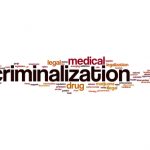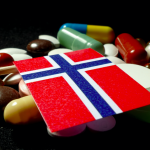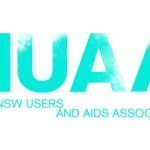Successful Drug Regulation: An Interview with Dr Julian Buchanan

The call for drug law reform is getting stronger, both globally and domestically. There is a growing acknowledgement amongst communities and former holders of positions of authority that the century-old drug prohibition model has failed.
The 2011 Global Commission on Drug Policy report outlined that the intensification of drug law enforcement over the close to fifty years of the war on drugs has led to the increased consumption of illicit substances, “the growth of a huge criminal black market,” and mass incarceration.
Significantly, amongst the members of the commission calling on governments to experiment with “models of legal regulation of drugs” are former UN secretary general Kofi Annan, ex-US secretary of state George Schultz and former prime minister of New Zealand Helen Clark.
But the subject of illegal drugs is polarising, which makes drug law reform is a slow-moving process. And this leads many current politicians and administers of power to simply continue on with their tough on drugs approach, despite the obvious harms it perpetuates.
Reducing harms to a point
The Portuguese model of decriminalisation is seen as the shining example of how drug use harms can be reduced. Since 2001, those found in possession of a certain amount of an illegal drug for personal use are not prosecuted, but rather they’re sent to a dissuasion panel to discuss their use.
However, while drug-induced deaths and drug-related HIV infections have plummeted since the Portuguese decriminalised drug use, the production and distribution of illicit substances still lies in the hands of the criminal underworld, with no quality control guarantees.
Pot regulation
In the US, cannabis has now been legalised for recreational use in nine states. In Colorado, where recreational cannabis has been sold retail since 2014, the benefits to the community and economy have been overwhelming, with tax revenue being funnelled into schools and health services.
Canada is set to follow suit and legalise recreational marijuana nationwide this year. But, while these models reverse the harms associated with the most popular drug in these jurisdictions, it does nothing to address the problems caused by the continued criminalisation of all others.
A regulated market
In Australia, the idea of legalising recreational cannabis, along with establishing a legal and regulated market that would encompass the wider range of illicit substances, have both been gaining traction over recent years.
Released in March last year, the latest Australia 21 report on drugs saw former police commissioners and ex-heads of corrective services calling for the beginning of “a process whereby the black market is replaced as much as possible by a white market.”
Retired Victoria University of Wellington criminology associate professor Julian Buchanan believes drug regulation is well overdue. But, he warns that without significant changes to the approach to governing legal drugs, regulation could simply reproduce the hazards of prohibition.
Sydney Criminal Lawyers® spoke to Dr Buchanan about the human rights framework that needs to be established for drug regulation to work, the detrimental effect this system could have for the poor if the framework is not established, and the current drug law reform climate in New Zealand.
Firstly, Dr Buchanan, international bodies began setting up the system of drug prohibition around a century ago, and the war on drugs has been raging for close to fifty years.
How would you describe the overall effects the prohibitionist system has had?
This archaic system of drug prohibition has had devastating global impact that has devastated lives of families, communities and countries. In decades to come, it will be remembered in history as an arbitrary, barbaric and brutal system of oppression.
Some of the offensive ideas and beliefs around in the 1950s towards Indigenous people, homosexuality, black people, women, mental illness and learning disabilities resulted in institutionalised oppression of these groups where discrimination became normalised and legitimised structurally, culturally and at an individual level.
There is still much work to be done in these areas, but thankfully, we have come a long way on these issues over the past 70 years.
However, by contrast, those oppressive 1950s attitudes towards drugs became enshrined in the 1961 UN Single Convention on Narcotic Drugs and little has changed since then. If anything, it is worse now as intolerance, controls and enforcement measures have also moved into the civil domain with drug testing students, motorists and employees.
During this period, we have been conned and coerced into embracing and using state approved drugs – alcohol, caffeine, tobacco and sugar – and encouraged to look with disdain towards substances banned by government. This distinction between state approved and state banned drugs is based entirely on political propaganda not science.
What we have come to regard as drugs is a social and cultural construct lacking any pharmacological evidence base. Perversely, banned substances – if under the same quality control conditions as state approved drugs – are generally less physically, socially and psychologically harmful, and arguably more pleasurable.
Further, there are medical benefits to many banned drugs that have been denied to patients, leaving some people with epilepsy, PTSD, depression, autism, Alzheimer’s, MS, Parkinson’s and cancer to needlessly suffer, or alternatively risk criminalisation and punishment.
Prohibition too, has distorted and thwarted our thinking on drug prevention, drug education and drug treatment, which have become preoccupied with avoiding drugs, abstaining and stigma towards people that use drugs. In some instances this prohibitionist dogma has produced damaging and potentially dangerous treatment.
Arguably, the greatest harms have been meted out by enforcement measures. On an individual level, prohibition means users have little idea of the strength of a substance, nor of the content. It could be cut with highly toxic ingredients. If there is an issue, they have no legal process for complaint, and if they get into personal difficulties, they are much less able to seek assistance for fear of stigma and/or arrest.
Indeed, one of the greatest threats to life is posed by a drug conviction, which could mean they may face considerable hurdles when seeking employment, education, housing, international travel, insurance and relationships.
In some countries, a drug conviction can lead to incarceration, even the death penalty. A growing punitiveness has seen Duterte in the Philippines and Trump in the US, both advocate death for drug dealers – excluding, of course, those who deal in state approved drugs – which in the Philippines appears to have been interpreted as legitimating the killing of suspects without trial or due process.
Drug enforcement has been deeply divisive, targeting the poor, the Indigenous, people of colour, and people from minority ethnic groups, despite evidence that levels of drug use is similar across most communities.
This discriminatory policing has resulted in deeply worrying disparities in terms of over-representation of Indigenous people and people of colour in prison, particularly in New Zealand, Australia, the UK and the USA.
So bad is the problem for people of color in the US, Professor Michelle Alexander has referred to drug law enforcement as the New Jim Crow. Indeed, prohibition has seriously damaged relationships in these communities with law enforcement.
The drug policy ratchet under prohibition only ever allows for more punitive approaches. However, research indicates that policing to remove dealers from stable supply chains has actually increased violence in communities, while miltarised responses to drug cartels have effectively resulted in violent drug wars that have destablised countries, such as Mexico.
Efforts to eradicate supply have largely been futile, they have barely had any impact on reducing illegal drug supplies. But in countries, such as Afghanistan and Colombia, crop eradication and carcinogenic crop spraying have devastated some of the poorest farmers in the country who have few viable alternatives available to them.
Prohibition has fuelled misinformation, division, harm, violence and death – locally, nationally and internationally.
It has undermined public health, facilitated the spread of dangerous diseases, such as HIV and hepatitis, caused deforestation and pollution, weakened human rights, encouraged hostility, stigma and discrimination to the Other, undermined international development and security, increased crime, facilitated lucrative illegal markets, negatively reshaped police-community relations, overcrowded prisons and wasted billions of dollars in a relentless attempt to enforce a system that can’t be enforced.
So impossible is the task of prohibiting drug possession, that even high security prisons are rife with prohibited drugs. The full extent of the damage caused by fifty years of prohibition has been comprehensively detailed by the excellent work of Count the Costs.
Due to the adverse effects of prohibition, many are calling for a regulated drug market. But, you’ve warned that regulation must be approached in a cautious manner or much of what exists under prohibition could be replicated.
Can you explain why a legal and regulated drug market could result in many of the same outcomes as the illegal underground market does?
There are two main problems arising from prohibition. One is the damage caused by criminalisation and punishment. The other is the damage caused by not knowing what you are using. Both issues must be resolved. But, the greatest extent of damage is caused by former, not the latter.
It is important to note, that criminalisation and punishment disproportionately target the poor, black and minority ethnic groups and Indigenous people.
Whereas, people who are both white and privileged are rarely captured in the law enforcement net of prohibition. For this group the greatest threat is not a heavy-handed criminal justice system that threatens to ruin your life with a drug conviction. No, the greatest threat they face is posed by ingesting an adulterated drug which has not been quality controlled.
Hardly surprisingly then, two strategies gaining the most traction in the drug reform movement led by the privileged class, are drug checking at festivals – not at needle exchanges or drug consumption rooms – and cannabis legalisation.
Bottom line, legal regulation is essentially ensuring a strictly regulated clean legal supply is available for those who can afford to buy legally regulated drugs from the new drug business entrepreneurs, that are, by the way, being exploited by ex-drug law enforcement officers. Prohibition has always been about power, profit and privilege, so perhaps no surprise at switching sides to leap into business.
Let’s remember too that if when seeking to end prohibition we rally behind legal regulation, we are supporting a vague concept, like rallying behind better drug laws. For example, alcohol is a legally regulated drug – poorly regulated in my opinion – but opioids too, are a legally regulated drug, far too strictly in my opinion. So, what legal regulation model are we rallying behind?
Regulation simply means managed by the state and legally available in certain circumstances. In most countries, it is possible for an adult to purchase alcohol – beer – in a supermarket and opioids – codeine – at a pharmacy, without much difficulty. Under regulation, other opioids such as morphine, diamorphine or fentanyl are legal to use in particular circumstances, such as when prescribed for acute pain relief.
However, while opioids are legally regulated, possession of certain opioids are in most circumstances strictly prohibited, and unapproved possession and/or supply can result in some of the harshest punishments available to the Criminal Courts, including life imprisonment.
By contrast, restrictions and punishments concerning possession and supply of another regulated drug, alcohol, are limited and generally lenient, as are regulations concerning alcohol sale outlets, sponsorship, media coverage and advertising.
So supporting legal regulation is a somewhat vague rally call from drug law reformers. Legal regulation is a response to a symptom of prohibition, but it fails to address the cause of our drug policy problem – prohibition.
Yes, we do need a legally regulated supply of all drugs – not just cannabis – but much depends on how that regulation model operates. A legal regulation model that incorporates the prohibition and punishment of unapproved adult personal possession and social dealing is I’d argue Prohibition 2.0.
Under regulation, the state may approve and legally regulate a wider range of drugs, while still prohibiting so-called dangerous drugs. But, even if the state made all drugs available under a legal regulation model, the government could still insist that those substances remain prohibited, unless purchased from state licensed pharmaceutical companies.
We then have a model in which it is an offence to be in possession of any drug from an unregulated source, and that could include all homegrown cannabis for example. Prohibition 2.0 would then continue to fuel an underground illegal drug market, and drug law enforcement would continue to be needed, and once again the poor, the Indigenous, black and minority ethnic (BME) groups will be targeted.
You’ve pointed out that a legal and regulated drug market set up by the state could actually adversely impact less privileged members of society.
Could you expand on how a regulated market could disadvantage the poor?
Let’s be clear and tell it as it is: the problem is prohibition – not drugs per se – the protagonists are the UN and government law enforcement – not gangsters. The damage being done is largely caused by the military, and criminal and community justice system – not criminals. And the victims we must protect are not so much the privileged class, who are relatively unaffected, but the poor, Indigenous and BME communities who have for decades suffered unfairly under prohibition.
To the privileged class, prohibition is a flawed policy worthy of discussion and reform, but rarely are they subject to drug law enforcement measures. Whereas under prohibition poor people, Indigenous communities and BME groups face considerable daily threats: being stopped and searched, arrested, charged, found guilty, imprisoned, excluded, marginalized, denied employed, denied housing, denied insurance, denied travel.
Regulation that perpetuates a two-tier system of state approved drugs that can only be purchased and outlaws unapproved drugs will simply replicate the existing oppressive model.
Less privileged members of society unable to afford the prices charged by state licensed suppliers would turn to the underground illegal market. Legal regulation could be to prohibition what Jim Crow was to slavery.
Legal regulation fails to properly address the core problem of prohibition: oppressive and unfair enforcement. It deals with the harshest aspects of prohibition experienced by the privileged, by enabling them to purchase a clean legal supply.
Before any regulation model should be considered, we must first and foremost decriminalise all possession, cultivation and production of drugs for personal use. This is a simple step that could be enacted quickly and with little cost.
Importantly, it sets the human rights framework to then explore the complex process of legal regulation, and that new framework must ultimately ensure we move beyond the initial stage of decriminalisation to establishing a legal right for adults to possess, cultivate and/or produce any drug for personal use.
In order to ensure that a regulated market doesn’t simply produce the same outcomes as prohibition, you’ve suggested that some of the foundations of the current system be abolished prior to moving towards regulation.
What do you propose should be changed before establishing a regulated market? And what process would need to be undertaken in order to do this?
We should not support any legal regulation model that perpetuates the state punishing adults for possessing or consuming substances the state doesn’t approve of.
Most advocates for legal regulation are silent on such issues, or regard losing those rights as a necessary compromise to broker reform. For example, New Zealand received global acclaim for its “world leading drug reform” when they introduced the Psychoactive Substances Act (PSA) 2013 to legally regulate new psychoactive substances (NPSs).
The model widened the net of prohibition by making the possession of previously legal drugs – legal highs or NPSs – illegal, and it also offered an approval system for NPSs via a regulation process. The fact that it worryingly punished personal adult possession of unapproved substances, leaving the door open to the heart of the problem – prohibition – seemed to be forgotten by drug reformers.
Given the enforcement abuses under drug prohibition, one clear non-negotiable principle in any reform must be to ensure that we reclaim the human right over our bodies to be able to choose what we ingest without the threat of criminalisation, punishment, hospitalisation, imprisonment or the death penalty by the state.
In light of all this, what do you think about the system of decriminalisation in Portugal, where people aren’t punished for personal possession, but drugs are still sold on the black market?
Portugal did the right thing in 2001, when they decriminalised all personal possession of drugs and built in additional support for the small percentage of drug users who develop problems with addiction. It’s a drug reform no-brainer.
It is a decision that makes great sense and it has had positive outcomes in reducing addiction rates, the burden on the criminal justice system, and fatal overdoses.
I think decriminalisation of possession is easy picking, low-hanging fruit, that should be the first step of reform for every country. But, so much more needs to be done.
Decriminalising cultivation and production for personal use only would be a second easy step that would help reduce the need for engagement in the criminal underworld, especially when the most popular drug used by far is easily homegrown.
After that, government should rescind drug laws and ensure they are replaced with a sensible evidence-based model of legal regulation rooted in human rights and harm reduction.
Ideally, what sort of model of legal regulation would you like to see established? How would drugs that are currently illegal be sold? And would this apply to all illicit substances?
An open invitation to the perpetrators of prohibition, the state – who have consistently and deliberately ignored science and evidence, and continued to enforce a brutal and draconian system of prohibition for 50 years, to devise a regulation model – is likely to result in continued disproportionate law enforcement measures imposed on the poor, the Indigenous and BME groups for possession of unapproved drugs.
So, before the state even begin the difficult and complex process of regulating drugs, we must first and foremost, ensure we abolish prohibition and restore human rights.
To most reformers, myself included, the key reform priority is to end all law enforcement for adult drug possession, cultivation and production for personal use.
This is a matter of principle that cannot be compromised and can’t be done incrementally. The human right over your body must be restored, while the devastating law enforcement abuses in policing drug possession must end.
Once that is secured and bolted down, then the important work to establish an appropriately regulated drug market can begin.
I would make all drugs available to adults under a legally regulated market, with strict regulation over the businesses, rather than consumers. Governments have a poor record of regulating the pharmaceutical – e.g. Fentanyl – sugar, alcohol and tobacco industry, so if the state are going to sensibly regulate drugs in a manner that protects human rights and promotes harm reduction, they will need careful oversight, advice and political pressure.
The risk is that the state who have for five decades resolutely maintained a draconian and austere system of drug prohibition, will pursue a model of regulation that will continue to punish possession, production and/or cultivation of unapproved drugs for personal use.
In terms of adult accessing drugs initially the main outlets could be pharmacies, soon followed by off licenses and gradually a cultural change with the most commonly preferred social and recreational drugs being available in cafes, bars, restaurants and major events.
This may sound like unknown territory, it isn’t really. Regrettably, we’ve already regulated, culturally accommodated, privileged and promoted arguably the most harmful drug of all, alcohol, and we’ve regulated it badly. But, despite pushing a harmful drug and managing it poorly, we have lived to tell the tale, and while reading this folk might be enjoying a glass of pinot noir.
We know from the folly of alcohol prohibition we need to live with the drug. But, hopefully we have learned lessons from alcohol and tobacco regulation, so forewarned and forearmed, we can do a much better job living with all drugs.
Alongside this new legal freedom should be easy access to sensible and truthful information about the risks posed by all drugs. Drug education, addiction prevention and addiction treatment must be informed not by ideological belief or moral crusade, but by evidence-based research.
These services must promote harm reduction and human rights. We should not be in the business of preventing drug use, anymore than we seek to prevent a coffee, glass of wine or cigar. We must be in the business of preventing drug policy harms caused by prohibition policies, and preventing and treating drug addiction.
And lastly, Dr Buchanan, you’re originally from the UK, but since 2011, you’ve been living in New Zealand.
What’s the social and political climate like in NZ towards the idea of establishing a legal and regulated drug market? And are there any signs that changes in that direction are already taking place?
I had imagined given the history of free thinking pioneers, who have taken principled stands and fought hard for women’s rights, sex workers’ rights, gay and lesbian marriage, and stood firm against South African apartheid and nuclear weapons, that they would be progressive drug reformers.
The publication of a lengthy and comprehensive radical review of the 1975 Misuse of Drugs Act (MDA) published in 2011 by the Law Commission set the context for major drug reform. It was a perfect opportunity that coincided with my arrival. I was excited at the idea of making a positive contribution to help reshape drug law, policy and practice in Aotearoa New Zealand.
The 2011 Law Commission report recommended: rescinding the 1975 MDA and replacing it with new legislation rooted in a health perspective, a cautioning scheme for all drug personal possession, and it recommended no one should go to prison for low-level social dealing.
However, I soon discovered that prevailing attitudes towards drug and drug users here are more conservative, even punitive. The disease model of addiction, abstinence and intolerance are still dominant.
I soon discovered the lead government minister and the lead NGO agency were reluctant to pursue harm reduction drug policies and, as a result, I found myself excluded from drug policy networks and events. It was not surprising then that the vast majority of reforms proposed by the Law Commission disappeared off the radar.
Instead of participating in drug policy reform, in my seven years in New Zealand, I’ve witnessed: the moral panic about methamphetamine contamination of houses, and a masses of money thrown at companies to carry out testing and cleaning; the roll out of a scheme to drug test unemployed people seeking work, with benefit suspensions for repeat positive drug tests; drug driving campaigns targeting cannabis users that conflate presence with impairment and crash causation; a major investment to introduce US styled Drug Courts centred on abstinence, drug testing, scram bracelets and residential rehabs; expensive annual police and air force helicopter missions to scour the countryside and remove cannabis plants; and the PSA 2013 that extended the net of prohibition further by outlawing every new psychoactive drug.
At the same time, Naloxone take home is still not available in New Zealand and self-medicating with cannabis remains a criminal offence. Disappointing is an understatement.
What is the chance of developing legal regulation here in New Zealand? It’s actually quite good I think. But, it’d be modelled on prohibition and confined to cannabis and possibly NPS.
The PSA and the recent bill on medicinal cannabis both show a clear preference in New Zealand for a regulation model that continues to prohibit and punish all unapproved possession, cultivation and production. A model that ensures a pharmaceutical business monopoly that would suit the privileged, but be of little use to the poor.
Medicinal pharmaceutical cannabis is costing patients in New Zealand upwards of $1,200 per month – totally unreachable and/or unsustainable to most people with life limiting conditions seeking to make their condition more bearable.
Inevitably, people will turn to an illegal underground market seeking to purchase more affordable unapproved drugs and risking criminalisation and punishment.
Does outlawing some drugs while approving others sound familiar? Yes, it does. It’s called prohibition. And there is no place for it in a mature, civilised democratic society.







